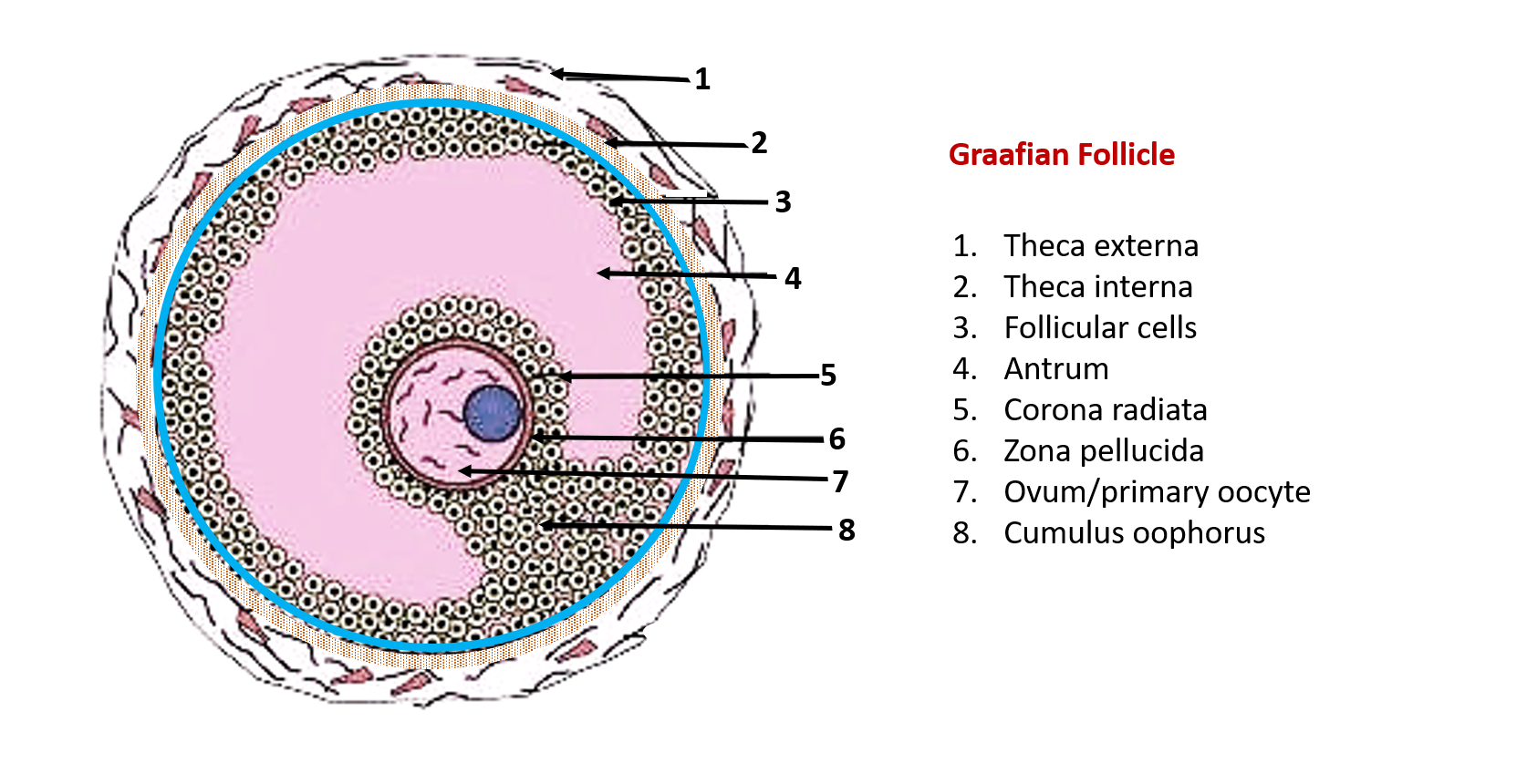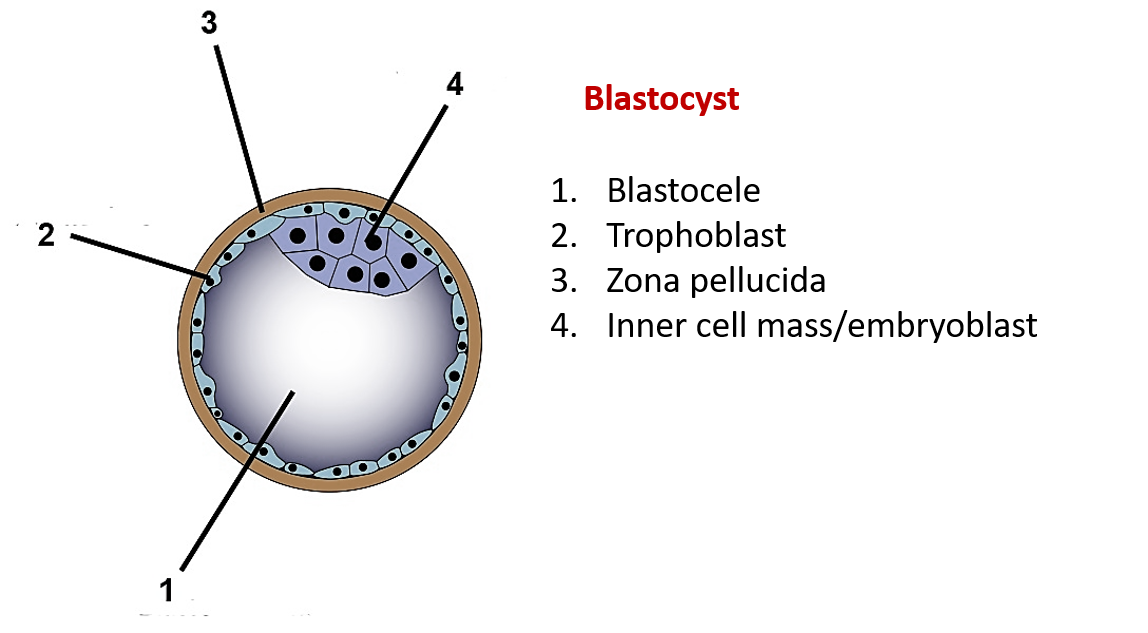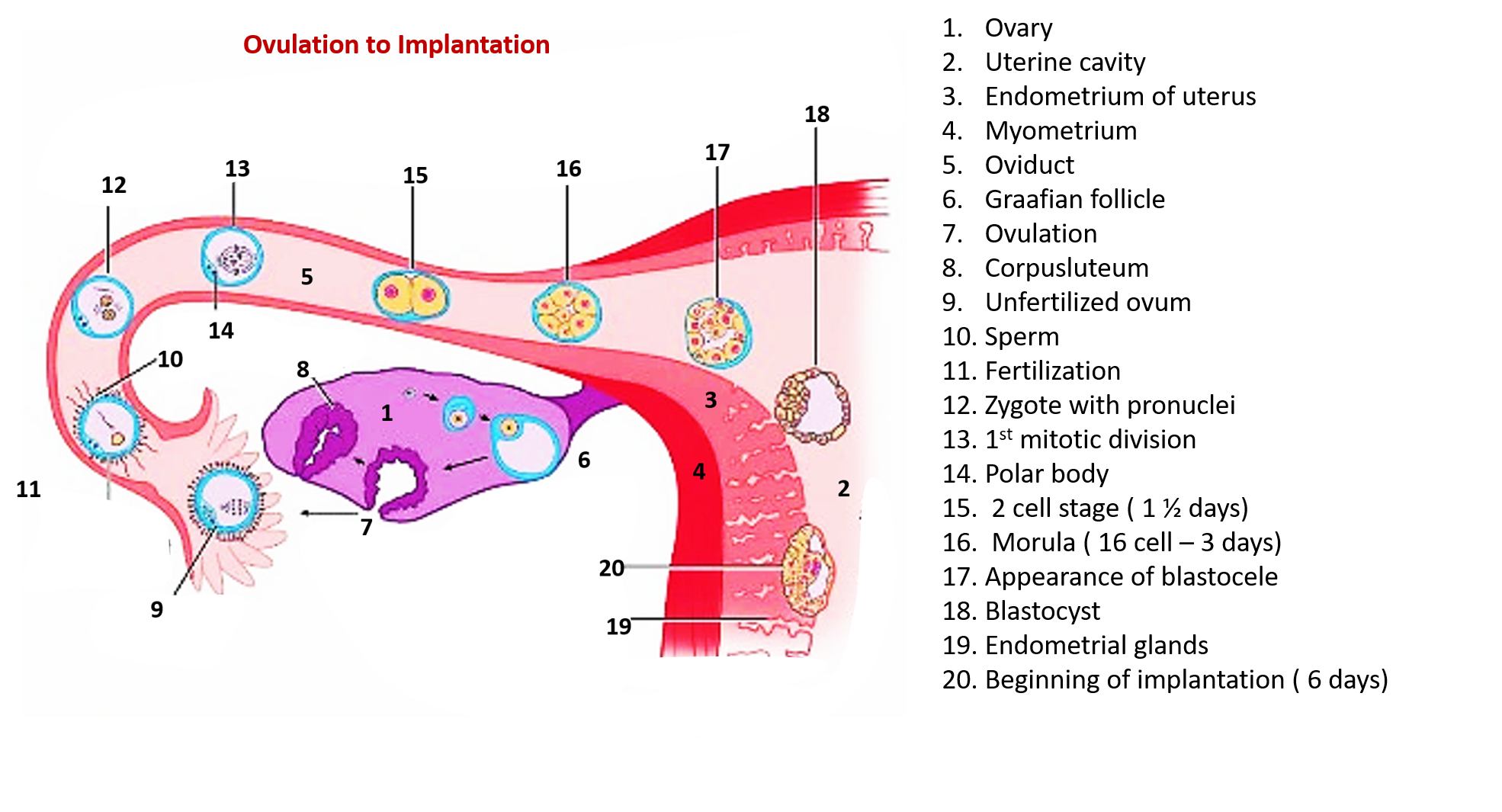GAMETOGENESIS, FERTILIZATION AND IMPLANTATION
Q. Define gametogenesis.
A. It is the process of formation and maturation of gametes ( male gamete is spermatozoa/sperm and female gamete is ovum).
Q. What is the significance of meiotic division in germ cells?
A. a. In meiosis the number of chromosomes is reduced from diploid to haploid (23), and after fertilization the diploid number of chromosomes is restored ( 46). Thus it helps in maintaining species specific number of chromosomes after fertilization.
b. Random distribution of maternal and paternal chromosomes along with the phenomenon of ‘Cross-over’ allows recombination of genetic material, so as to achieve distinctive genetic material for each individual.
Q. What are the different stages of development?
A. Following are the stages of development:
- Pre-embryonic period – from fertilization to 2nd week.
- Embryonic period – from 3rd -8th week.
- Fetal period – from 9th week till birth.
Q. What is Embryo?
A. From 2nd to 8th week the developing human is called embryo.
Q. What is fetus?
A. From 9th week onwards till birth the developing human is referred to as Fetus.
Q. What is Conceptus?
A. Conceptus refers to fetus/embryo along with all the extraembryonic membranes ( product of conception).
Q. What is Zygote?
A. Zygote is a fertilized ovum with diploid number of chromosomes.
Q. In which stage of spermatogenesis/oogenesis the number of chromoses is reduced to half?
A. In 1st Meiotic division form primary spermatocyte/oocyte to secondary spermatocyte/oocyte.
Q. What is the difference between spermatogenesis and spermiogenesis and how many days do they take to complete?
A. Spermatogenesis is the complete process of formation of spermatozoa from spermatogonium ( spermatogonia-> primary spermatocyte -> secondary spermatocyte -> spermatid -> spermaozoa) and it takes 64-74 days. Spermiogenesis is the process of transformation of spermatid into spermatozoa and takes 24 days to complete.
Q. What are the changes that occur during spermiogenesis?
A. Spermatids undergo a number of morphological changes to form spermatozoa, This process is called spermiogenesis. Following changes take place:
- Formation of head, neck, middle piece and tail of sperm.
- Golgi apparatus forms the acrosome which caps the head of spermatozoa..
- Condensation of nucleus.
- Shedding of most of the cytoplasm.
- Centriole divides into two parts – distal part forms the axial filament of the tail and the proximal part forms the basal body.
- Mitochondrion are arranged in a spiral manner in the middle piece.

Structure of Sperm
Q. What is capacitation?
A. In the process of capacitation , the glycoprotein coat and seminal proteins covering the head ( acrosomal region) of the sperm are removed. It takes approx. 7 hrs and occurs in the uterine tube. Only capacitated sperm can pass through the corona cells.
Q. What is acrosome reaction?
A. When spermatozoon comes in contact with the zona pellucida, perforations appear in the acrosomal wall which permit the release of enzymes need to penetrate the zona pellucida. Rhe reaction is induced by Zona protiens.
Q. When does 1st meiotic division of primary oocyte is completed?
A. 1st meiotic division of primary oocyte begins before birth but is completed from puberty onwards just before ovulation.
Q. At what stage of prophase , the 1st meiotic division of primary oocyte is suspended?
A. Dictyotene stage.
Q. What is the stage of female germ cell at ovulation?
A. Secondary oocyte stage.
Q. When is the second meiotic division of secondary oocyte is completed?
A. Secondary oocyte completes the second meiotic division at the time of fertilization.
Q. Where does fertilization usually occurs?
A. In the Ampulla of uterine tube.
Q. What are the steps in the process of fertilization?
A. Following are the steps:
- Dispersion of cells of corona radiata.
- Penetration of zona pellucida
- Fusion of cell membranes of oocyte and sperm.
- Completion of 2nd meiotic division.
- Fusion of male and female pronuclei to form a single cell ZYGOTE with 46 chromosomes.
Q. What are the results of fertilization?
A. a. Completion of 2nd meiotic division of secondary oocyte.
b. Restoration of diploid number of chromosomes (46).
c. Determination of chromosomal sex of embryo depending upon X or Y bearing sperm that fertilizes ovum.
d. Initiation of cleavage division.
Q. What is cleavage division?
A. Cleavage division is a series of mitotic divisions that the zygote undergoes, resulting in formation of progressively smaller daughter cells called blastomeres. There is no increase in protoplasm and therefore it results in this results in cells which are similar in size to that of somatic cells.
Q. Where and when implantation occurs?
A. Implantation usually occurs in the upper part of posterior wall of uterus by the end of 1st week.
Q. What are the functions of Zona pellucida?
A. a. Prevents the embryo from sticking to wall of uterine tube as it travels along it. It disappears before implantation.
b. Zona pellucida glycoproteins help in sperm binding to it and inducing acrosomal reaction.
c. Its glycoproteins also prevent polyspermy.
d. It holds the blastomeres of early embryo together.
Q. Uterus is in which phase at the time of fertilization?
A. Secretory phase.
Q. What is the role of Corpus luteum and how is it formed?
A. Corpus luteum is derived from the ovarian follicle after ovulation. After ovulation the remaining granulosa cells and cells of theca interna accumulate yellowing pigment lutein and are therefrore called luteal cells which form corpus luteum. It secretes progesterone which causes the uterine mucosa to enter progestational /secretory phase so as to prepare it for implantation.
Q. What is the fate of corpus luteum?
A. a. If the ovum is not fertilized, corpus luteum persists for about 14 days after which it degenerates and forms corpus albicans. It is called Corpus luteum of menstruation.
b. If ovum is feritlized, corpus luteum persists for 3-4 months. This is called corpus luteum of pregnancy.
Q. What prevents/delays the degeneration of corpus luteum in case of pregnancy?
A. Human chorionic gonadotropin (HCG) secreted by the trophoblast cells of the embryo prevents degeneration of corpus luteum of pregnancy.
Q. Name the ectopic sites of fertilization.
A Ovary, abdominal cavity, uterine tube, uterus near the internal os.
Q. Identify the structures numbered 1-8 of Graafian Follicle.

Q. Identify the structures numbered 1-4 of Blastocyst.

Q. Identify the structures labelled 1-20.


tysm!!
Your questions and answers are really helpful. I’m hoping you can give an essay on the menstrual cycle. I’m really struggling with it
Great work!
Good questions for revision